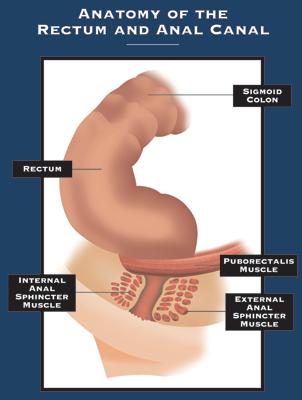FISTULA CAUSES AND SYMPTOMS

Nearly all anal fistulae are a result of an anorectal abscess. An anorectal abscess begins with infection in one of the anal glands. The infection may stay in the space between the sphincters (the intersphincteric space), may spread down to the skin around the anus (perianal skin), or may extend through the external anal sphincter.
With an anorectal abscess usually pain and a tender swelling around the anus is present. There may be a fever. Treatment is usually straightforward and consists of incising the skin over the abscess in order to drain the contained pus. This can usually be accomplished in the docctor's office or clinic under local anesthesia.
Occasionally more extensive infection requires treatment in the operating room under general or regional anesthesia. Treatment following drainage of the abscess usually consists of sitz baths several times a day and use of bulk forming agents. Antibiotics are rarely necessary. Over the next several weeks the abscess wound gradually heals.
A fistula-in-ano results when there is failure of the abscess wound to heal completely. Most people with a fistula-in-ano give a history of having an anorectal abscess that was either drained surgically or spontaneously drained. About 50% of patients with an acute anorectal abscess go on to develop a chronic fistula-in-ano. The primary symptom of a fistula-in-ano is persistent drainage due to chronic, low grade sepsis (infection) after treatment of the acute abscess.
Diagnosis of a fistula-in-ano rests on identifying the external opening on the perianal skin and the internal opening in the anal canal. This often requires examination under anesthesia in the operating room.
Make an Appointment